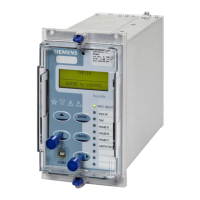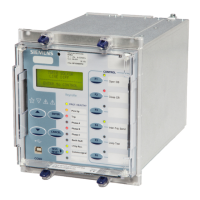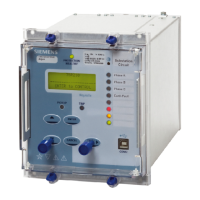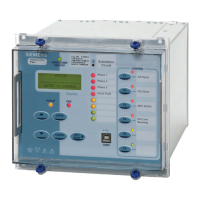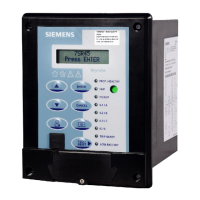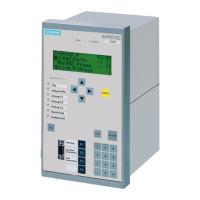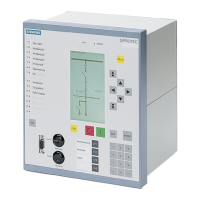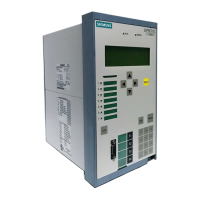7SR105 Rho and 7SR17 Rho Applications Guide
©2018 Siemens Protection Devices Chapter 7 Page 8 of 31
2.1.1.1 Thermal Overload (49)
Gn 49 Characteristic
The IEC characteristic is used for general applications, see Figure 2.1-3.
Additionally ‘User Defined’ curves are selectable, these are used where the thermal characteristic of the motor is
significantly different e.g. where forced cooling is applied.
0.10
1.00
10.00
100.00
1000.00
10000.00
0.0 2.0 4.0 6.0 8.0 10.0
Overload Level (Multiple of Setting I
θ
)
TauH =
100
TauH
=
50
TauH = 30
TauH = 20
TauH = 15
TauH = 10
TauH = 5
TauH = 3
TauH = 2
TauH = 1
TauH = 0.5
Figure 2.1-3 Thermal Heating (Cold) Characteristics
Gn49 TauH Heating Constant
Where the actual motor heating time constant is given by the manufacturer, then this figure can be used to
determine the TauH setting, see Figure 2.1-3.
Gn49 TauS Starting Constant
When a motor is running at full speed, the airflow and ventilation give optimum cooling. During starting the
ventilation is reduced. If this time constant is known, it can be set on the relay. If not, then set the time constant
TauS to 1.0, i.e. the same as TauH. The time constant switches from TauH to TauS when a motor start is
determined.
The applied time constant switches from TauS to TauH when the ‘end of start’ is determined.

